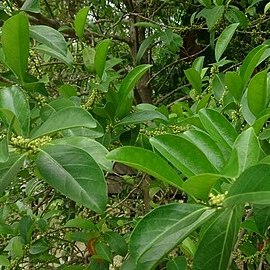A tree. The bark cracks along its length. The leaves are oval and smooth but with clear dots. The base of the leaf is wedge shaped. The flowers are yellowish and have a scent. The flowers are of separate sexes. The fruit is round and has 3 lobes. They are blackish when ripe. They are 11-15 mm across and have 3 seeds.

